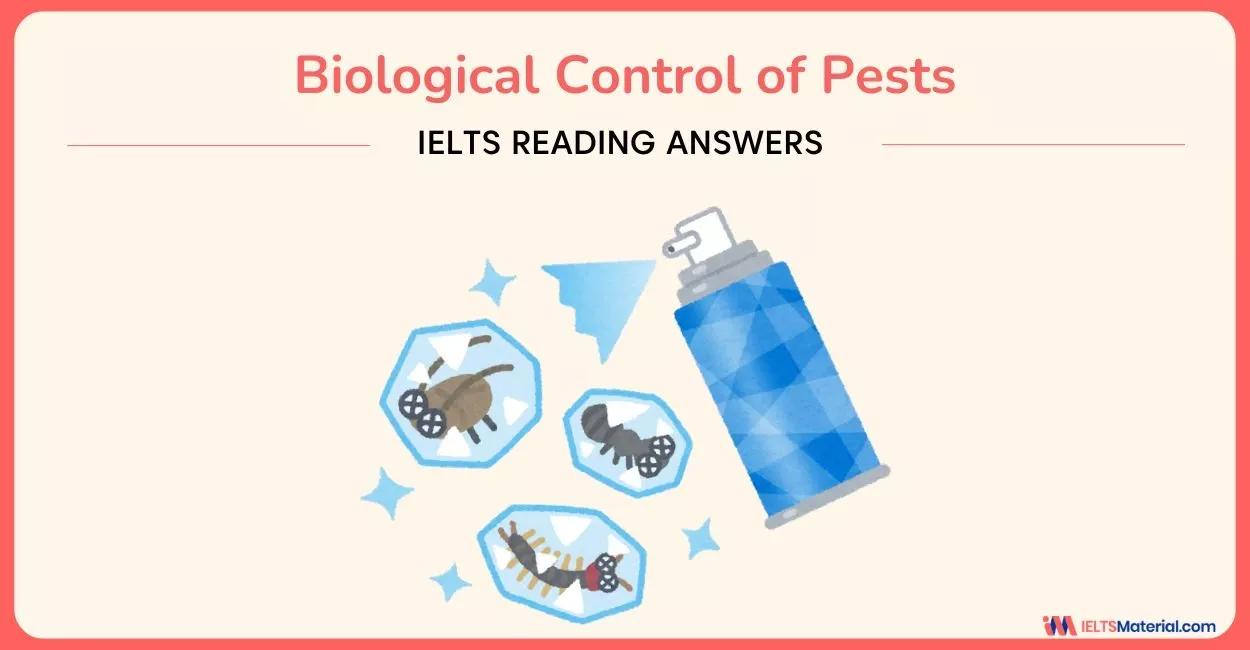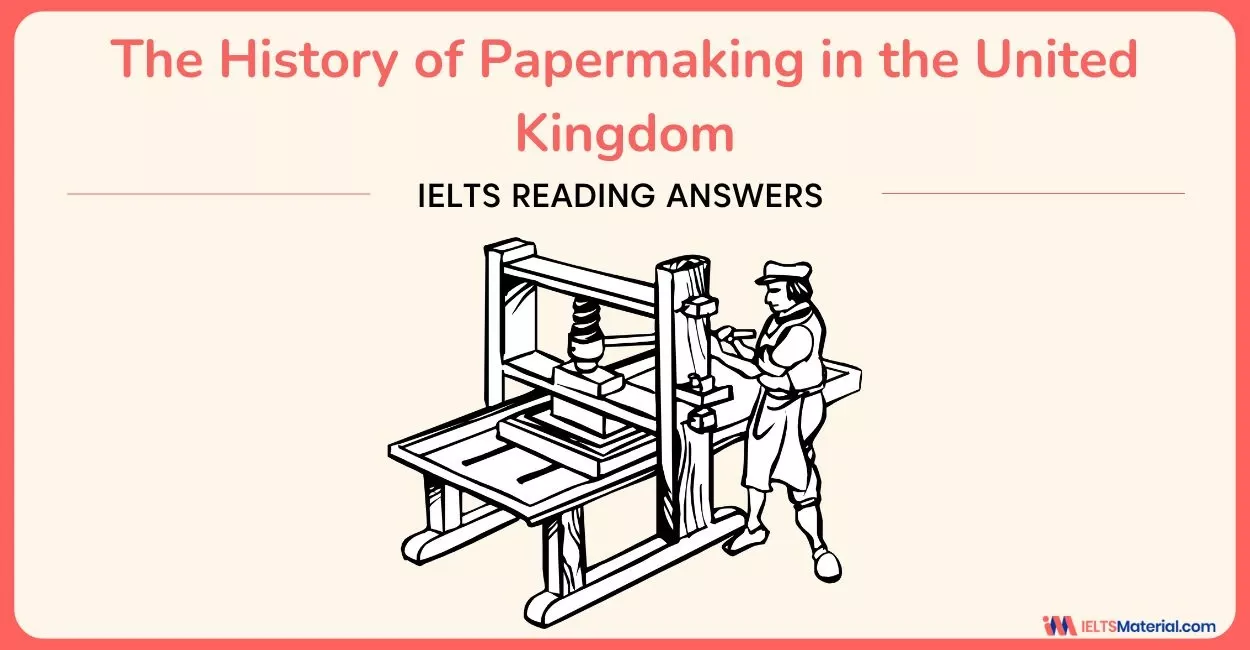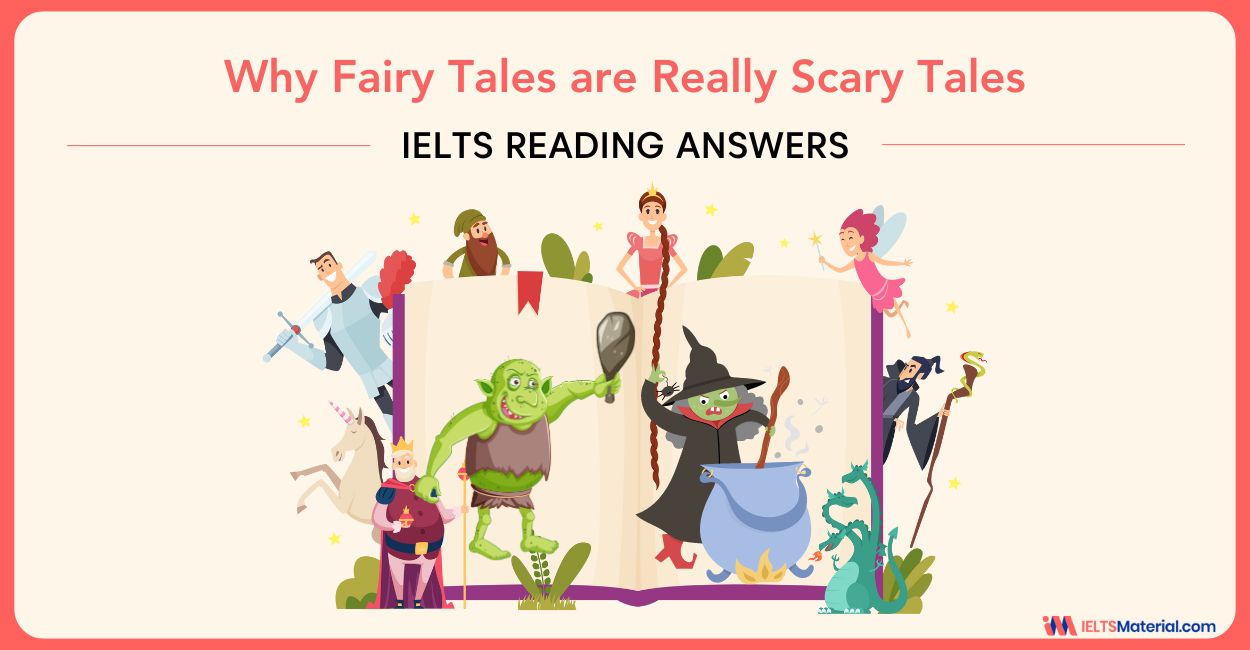Why Fairy Tales are Really Scary Tales - IELTS Reading Answers
16 min read
Updated On
-
Copy link
Why Fairy Tales are Really Scary Tales is an IELTS Academic Reading topic with 14 questions, covering matching, completion questions & MCQs. Take the test and compare your answers with the explanations provided to improve your chances of a 9 band score.
Table of Contents

Limited-Time Offer : Access a FREE 10-Day IELTS Study Plan!
Practising IELTS Reading passages, like Why Fairy Tales are Really Scary Tales from Cambridge IELTS 15 Test 3 is the ideal step to master IELTS Reading. But simply solving the questions won’t help.
You have to learn how to scan the given text, highlight keywords using the IELTS Reading keyword techniques and locate the answer within the limited duration of the exam in order to achieve the desired band score in this section. The IELTS Academic reading passage, Why Fairy Tales are Really Scary Tales, with 14 questions, provides you that golden opportunity. Also, if you are interested in familiarizing yourself with all the question types, don’t hesitate to take an IELTS reading practice test.
The question types found in the IELTS Reading Answers of Why Fairy Tales are Really Scary Tales are:
- IELTS Reading Matching Sentence Endings (Q. 1-5)
- IELTS Reading Summary Completion (Q. 6-10)
- IELTS Reading Multiple-Choice Question (Q. 11-14)
Book a FREE session to know more about the IELTS questions in ‘Why Fairy Tales are Really Scary Tales’ with top experts!
Reading Passage
Why Fairy Tales are Really Scary Tales
Some people think that fairy tales are just stories to amuse children, but their universal and enduring appeal may be due to more serious reasons.
People of every culture tell each other fairy tales but the same story often takes a variety of forms in different parts of the world. In the story of Little Red Riding Hood that European children are familiar with, a young girl on the way to see her grandmother meets a wolf and tells him where she is going. The wolf runs on ahead and disposes of the grandmother, then gets into bed dressed in the grandmother’s clothes to wait for Little Red Riding Hood. You may think you know the story – but which version? In some versions, the wolf swallows up the grandmother, while in others it locks her in a cupboard. In some stories, Red Riding Hood gets the better of the wolf on her own, while in others a hunter or a woodcutter hears her cries and comes to her rescue.
The universal appeal of these tales is frequently attributed to the idea that they contain cautionary messages: in the case of Little Red Riding Hood, to listen to your mother, and avoid talking to strangers. ‘It might be what we find interesting about this story is that it’s got this survival-relevant information in it,’ says anthropologist Jamie Tehrani at Durham University in the UK. But his research suggests otherwise. ‘We have this huge gap in our knowledge about the history and prehistory of storytelling, despite the fact that we know this genre is an incredibly ancient one,’ he says. That hasn’t stopped anthropologists, folklorists* and other academics devising theories to explain the importance of fairy tales in human society. Now Tehrani has found a way to test these ideas, borrowing a technique from evolutionary biologists.
To work out the evolutionary history, development and relationships among groups of organisms, biologists compare the characteristics of living species in a process called ‘phylogenetic analysis’. Tehrani has used the same approach to compare related versions of fairy tales to discover how they have evolved and which elements have survived longest. Tehrani’s analysis focused on Little Red Riding Hood in its many forms, which include another Western fairy tale known as The Wolf and the Kids. Checking for variants of these two tales and similar stories from Africa, East Asia and other regions, he ended up with 58 stories recorded from oral traditions. Once his phylogenetic analysis had established that they were indeed related, he used the same methods to explore how they have developed and altered over time.
First, he tested some assumptions about which aspects of the story alter least as it evolves, indicating their importance. Folklorists believe that what happens in a story is more central to the story than the characters in it – that visiting a relative, only to be met by a scary animal in disguise, is more fundamental than whether the visitor is a little girl or three siblings, or the animal is a tiger instead of a wolf.
However, Tehrani found no significant difference in the rate of evolution of incidents compared with that of characters. ‘Certain episodes are very stable because they are crucial to the story, but there are lots of other details that can evolve quite freely,’ he says. Neither did his analysis support the theory that the central section of a story is the most conserved part. He found no significant difference in the flexibility of events there compared with the beginning or the end. But the really big surprise came when he looked at the cautionary elements of the story. ‘Studies on hunter-gatherer folk tales suggest that these narratives include really important information about the environment and the possible dangers that may be faced there – stuff that’s relevant to survival,’ he says. Yet in his analysis such elements were just as flexible as seemingly trivial details. What, then, is important enough to be reproduced from generation to generation?
The answer, it would appear, is fear – blood-thirsty and gruesome aspects of the story, such as the eating of the grandmother by the wolf, turned out to be the best preserved of all. Why are these details retained by generations of storytellers, when other features are not? Tehrani has an idea: ‘In an oral context, a story won’t survive because of one great teller. It also needs to be interesting when it’s told by someone who’s not necessarily a great storyteller.’ Maybe being swallowed whole by a wolf, then cut out of its stomach alive is so gripping that it helps the story remain popular, no matter how badly it’s told.
Jack Zipes at the University of Minnesota, Minneapolis, is unconvinced by Tehrani’s views on fairy tales. ‘Even if they’re gruesome, they won’t stick unless they matter,’ he says. He believes the perennial theme of women as victims in stories like Little Red Riding Hood explains why they continue to feel relevant. But Tehrani points out that although this is often the case in Western versions, it is not always true elsewhere. In Chinese and Japanese versions, often known as The Tiger Grandmother, the villain is a woman, and in both Iran and Nigeria, the victim is a boy. Tehrani’s findings did not surprise Mathias Clasen at Aarhus University in Denmark. ‘Habits and morals change, but the things that scare us, and the fact that we seek out entertainment that’s designed to scare us – those are constant,’ he says. Clasen believes that scary stories teach us what it feels like to be afraid without having to experience real danger, and so build up resistance to negative emotions.
*Folklorists: those who study traditional stories
Questions 1- 5
Complete each sentence with the correct ending, A-F, below.
Write the correct letter, A-F, in boxes 1-5 on your answer sheet.
1 In fairy tales, details of the plot
2 Tehrani rejects the idea that the useful lessons for life in fairy tales
3 Various theories about the social significance of fairy tales
4 Insights into the development of fairy tales
5 All the fairy tales analysed by Tehrani
A may be provided through methods used in biological research.
B are the reason for their survival.
C shows considerable global variation.
D contains animals which transform to become humans.
E were originally spoken rather than written.
F have been developed without factual basis.
Questions 6-10
Complete the summary using the list of words, A-I, below.
Write the correct letter, A-I, in boxes 6-10 on your answer sheet.
Phylogenetic analysis of Little Red Riding Hood
Tehrani used techniques from evolutionary biology to find out if 6………………….. existed among 58 stories from around the world. He also wanted to know which aspects of the stories had the fewest 7…………………., as he believed these aspects would be the most important ones. Contrary to other beliefs, he found that some 8……………………. that were included in a story tended to change over time, and that the middle of a story seemed no more important than the other parts. He was also surprised that parts of a story which seemed to provide some sort of 9…………………. were unimportant. The aspect that he found most important in a story’s survival was 10…………………
| A ending | B events | C warning |
| D links | E records | F variations |
| G horror | H people | I plot |
Questions 11-14
Choose the correct letter, A, B, C or D.
Write the correct letter in boxes 11-14 on your answer sheet.
11 What method did Jamie Tehrani use to test his ideas about fairy tales?
A He compared oral and written forms of the same stories.
B He looked at many different forms of the same basic story.
C He looked at unrelated stories from many different countries.
D He contrasted the development of fairy tales with that of living creatures.
12 When discussing Tehrani’s views, Jack Zipes suggests that
A Tehrani ignores key changes in the role of women.
B stories which are too horrific are not always taken seriously.
C Tehrani overemphasises the importance of violence in stories.
D features of stories only survive if they have a deeper significance.
13 Why does Tehrani refer to Chinese and Japanese fairy tales?
A to indicate that Jack Zipes’ theory is incorrect
B to suggest that crime is a global problem
C to imply that all fairy tales have a similar meaning
Dto add more evidence for Jack Zipes’ ideas
14 What does Mathias Clasen believe about fairy tales?
A They are a safe way of learning to deal with fear.
B They are a type of entertainment that some people avoid.
C They reflect the changing values of our society.
D They reduce our ability to deal with real-world problems.
Master Academic Reading with our IELTS Reading guide for high scores on passages like ‘Why Fairy Tales are Really Scary Tales’!
Answers of Why Fairy Tales are Really Scary Tales Reading Passage With Location and Explanation
Scroll down for the answers to the IELTS Academic passage, Why Fairy Tales are Really Scary Tales, and find out your score.
1 Answer: C
Question type: Matching Sentence Endings
Answer location: Paragraph 1, Line 1
Answer explanation: Through a reference line like, “People of every culture tell each other fairy tales but the same story often takes a variety of forms in different parts of the world.”, it can be concluded that the plot details in fairy tales are different around the globe (different parts of the world). Hence, the answer is C (show considerable global variation.).
2 Answer: B
Question type: Matching Sentence Endings
Answer location: Paragraph 2, Line 2- Line 3
Answer explanation: In the cited location, it is stated, “‘It might be what we find interesting about this story is that it’s got this survival-relevant information in it,’ says anthropologist Jamie Tehrani at Durham University in the UK. But his research suggests otherwise.”. Based on this reference, it can be inferred that the research of Tehrani suggests that the survival of the fairy tales is not due to the lessons they impart. Hence, the answer is B (are the reason for their survival.).
3 Answer: F
Question type: Matching Sentence Endings
Answer location: Paragraph 2, Line 4-Line 5
Answer explanation: In Paragraph 2, it is stated that “‘We have this huge gap in our knowledge about the history and prehistory of storytelling…That hasn’t stopped anthropologists, folklorists* and other academics devising theories to explain the importance of fairy tales in human society.”. This statement indicates that although there is a gap between the facts of story-telling, various theories have been developed by anthropologists, folklorists and other academics about the importance of fairy tales. Hence, the answer is F (have been developed without factual basis.).
4 Answer: A
Question type: Matching Sentence Endings
Answer location: Paragraph 3, Line 1-Line 2
Answer explanation: In the cited location, it is stated that “…biologists compare the characteristics of living species in a process called ‘phylogenetic analysis’. Tehrani has used the same approach to compare related versions of fairy tales…”. Based on this reference, it can be concluded that Tehrani uses a biological method called ‘phylogenetic analysis’ to gain insights into the development of fairy tales. Hence, the answer is A (may be provided through methods used in biological research.).
5 Answer: E
Question type: Matching Sentence Endings
Answer location: Paragraph 3, Line 3-Line 4
Answer explanation: The quoted lines of the third paragraph tell us, “Tehrani’s analysis focused on Little Red Riding Hood in its many forms …he ended up with 58 stories recorded from oral traditions.”. So, it can be concluded that the stories that Tehrani analyzed were spoken (recorded from oral traditions). Hence, the answer is E (were originally spoken rather than written.).
6 Answer: D
Question type: Summary Completion
Answer location: Paragraph 3, Line 5
Answer explanation: The given line specifies that “Once his phylogenetic analysis had established that they were indeed related, he used the same methods to explore how they have developed and altered over time.”. It is indicated that Tehrani used a biological technique called phylogenetic analysis to find out whether the 58 stories he analyzed were related (had any links). Hence, the answer is D (links).
7 Answer: F
Question type: Summary Completion
Answer location: Paragraph 4, Line 1
Answer explanation: In the fourth paragraph, it is given, “First, he tested some assumptions about which aspects of the story alter least as it evolves, indicating their importance.”. This reference proves that Tehrani tried to find out the sections of the stories with minimum variations (alter) as those were the most important parts. Hence, the answer is F (variations).
8 Answer: B
Question type: Summary Completion
Answer location: Paragraph 4, Line 2 & Paragraph 5, Line 1
Answer explanation: In the cited line, it is written that “Folklorists believe that what happens in a story is more central to the story than the characters in it…However, Tehrani found no significant difference in the rate of evolution of incidents compared with that of characters.”. It can be concluded that contrary to the common beliefs of the folklorist that the middle part of the story is more important, Tehrani found out that certain events (incidents) change and the central part is not that important. Hence, the answer is B (events).
9 Answer: C
Question type: Summary Completion
Answer location: Paragraph 5, Line 5 & Line 7
Answer explanation: In the given location, it is given that “But the really big surprise came when he looked at the cautionary elements of the story…Yet in his analysis such elements were just as flexible as seemingly trivial details.”. This shows that Tehrani was surprised to find out the warnings (cautionary elements) were flexible and not that important (trivial details). Hence, the answer is C (warning).
10 Answer: G
Question type: Summary Completion
Answer location: Paragraph 5, Line 8 & Paragraph 6, Line 1
Answer explanation: In the specified paragraphs, it is stated that “What, then, is important enough to be reproduced from generation to generation? The answer, it would appear, is fear – blood-thirsty and gruesome aspects of the story…”. This shows that Tehrani found out that the most important element of the stories was the horrors (blood-thirsty and gruesome aspects). Hence, the answer is G (horror).
11 Answer: B
Question type: Multiple-Choice Questions
Answer location: Paragraph 3, Line 3
Answer explanation: In the mentioned location, it is given that “Tehrani’s analysis focused on Little Red Riding Hood in its many forms, which include another Western fairy tale known as The Wolf and the Kids.”. In other words, Tehrani analyzed different (many) versions of the same story. Hence, the answer is B (He looked at many different forms of the same basic story.).
12 Answer: D
Question type: Multiple-Choice Questions
Answer location: Paragraph 7, Line 2
Answer explanation: In the seventh paragraph, it is specified that “‘Even if they’re gruesome, they won’t stick unless they matter,’ he says.”. In other words, Jack Zipes opines that if the stories don’t have deeper significance (they matter), they will not survive (won’t stick). Hence, the answer is D (features of stories only survive if they have a deeper significance. ).
13 Answer: A
Question type: Multiple-Choice Questions
Answer location: Paragraph 7, Line 4-Line 5
Answer explanation: In the above-mentioned paragraph, it is stated that “But Tehrani points out that although this is often the case in Western versions, it is not always true elsewhere. In Chinese and Japanese versions, often known as The Tiger Grandmother…”. It can be pointed out that Tehrani refers to the Chinese and Japanese version of the stories to prove that Jack Zipes’ opinion is incorrect . Hence, the answer is A (to indicate that Jack Zipes’ theory is incorrect).
14 Answer: A
Question type: Multiple-Choice Questions
Answer location: Paragraph 7, Line 8
Answer explanation: In the specific line, it is mentioned that “Clasen believes that scary stories teach us what it feels like to be afraid without having to experience real danger, and so build up resistance to negative emotions.”. In other words, Mathias Clasen believes that the horror in the fairy tales is the safe way to deal with fear as it teaches us what fear is without actually experiencing it and thereby building resistance against it. Hence, the answer is A (They are a safe way of learning to deal with fear.).
Tips for Answering the Question Types in Why Fairy Tales are Really Scary Tales IELTS Reading Answers
You might know the solutions to the questions in the passages, Why Fairy Tales are Really Scary Tales, but that might not be enough when you want to give your hundred percent on IELTS. So, let us have a quick revision of IELTS exam preparation tips on how to solve the questions types in Why Fairy Tales are Really Scary Tales.
Matching Sentence Endings:
Matching sentence ending questions come with two lists – a list of incomplete sentences and another one of possible sentence endings. You will have to match them on the basis of the information provided in the passage. Some tips to answer the questions and obtain a high band in IELTS are given below:
- The answers will be in the same order as the list of incomplete sentences.
- Use the elimination process to get the correct answer.
- Don’t read the complete text until you have studied the incomplete sentences and the endings.
- Only read the relevant sentences.
- You will have to match meanings and not the exact words. Thus, look for paraphrasing and words.
- You must ensure that the grammatical structure of two halves of the sentence is matching correctly.
Summary Completion:
Summary Completion is a type of question in IELTS Reading that requires you to fill in a gap in a paragraph with a word or phrase from the passage. To answer summary completion questions, you can use the following strategies:
- Read the sentences carefully: This will give you an idea of the type of word or phrase that is missing.
- Scan the passage for the keywords: The keywords in the sentence can help you to identify the correct word or phrase.
- Read the sentence with the missing word or phrase: This will help you to see how the word or phrase fits into the sentence.
- Check your answer: Once you have filled in the gap, make sure that your answer makes sense in the context of the sentence.
Multiple-Choice Questions:
You will be given a reading passage followed by several questions based on the information in the paragraph in multiple-choice questions. Your task is to understand the question and compare it to the paragraph in order to select the best solution from the available possibilities.
- Read the question and choose the keywords before reading the passage. If the query sentence is lacking in information, look into keyword possibilities.
- Then read the passage using the keywords to identify the important information.
- Read the essential words carefully and match them with each choice to select the proper option.
- There are various possibilities with keywords that do not match the information.
- Try to use the elimination process as much as possible.
- Match the meaning rather than the terms to find the best solution.
Also check:
- Grimm’s Fairy Tales Reading Answers
- Children’s Literature IELTS Reading Answers
- How to Prepare IELTS at Home?
- Citywide Power Company- IELTS Reading Answers
- Storytelling – IELTS Reading Answers
- Time Management for IELTS Reading
- 20 Best IELTS Preparation Books for Self Study
- Roman shipbuilding and Navigation IELTS Reading Answers
- Could Urban Engineers Learn From Dance?
Practice IELTS Reading based on question types

Start Preparing for IELTS: Get Your 10-Day Study Plan Today!
Explore other Reading Actual Tests

Nehasri Ravishenbagam

Kasturika Samanta

Kasturika Samanta

Nehasri Ravishenbagam
Recent Articles

Nehasri Ravishenbagam

Haniya Yashfeen

Haniya Yashfeen

Haniya Yashfeen




Post your Comments